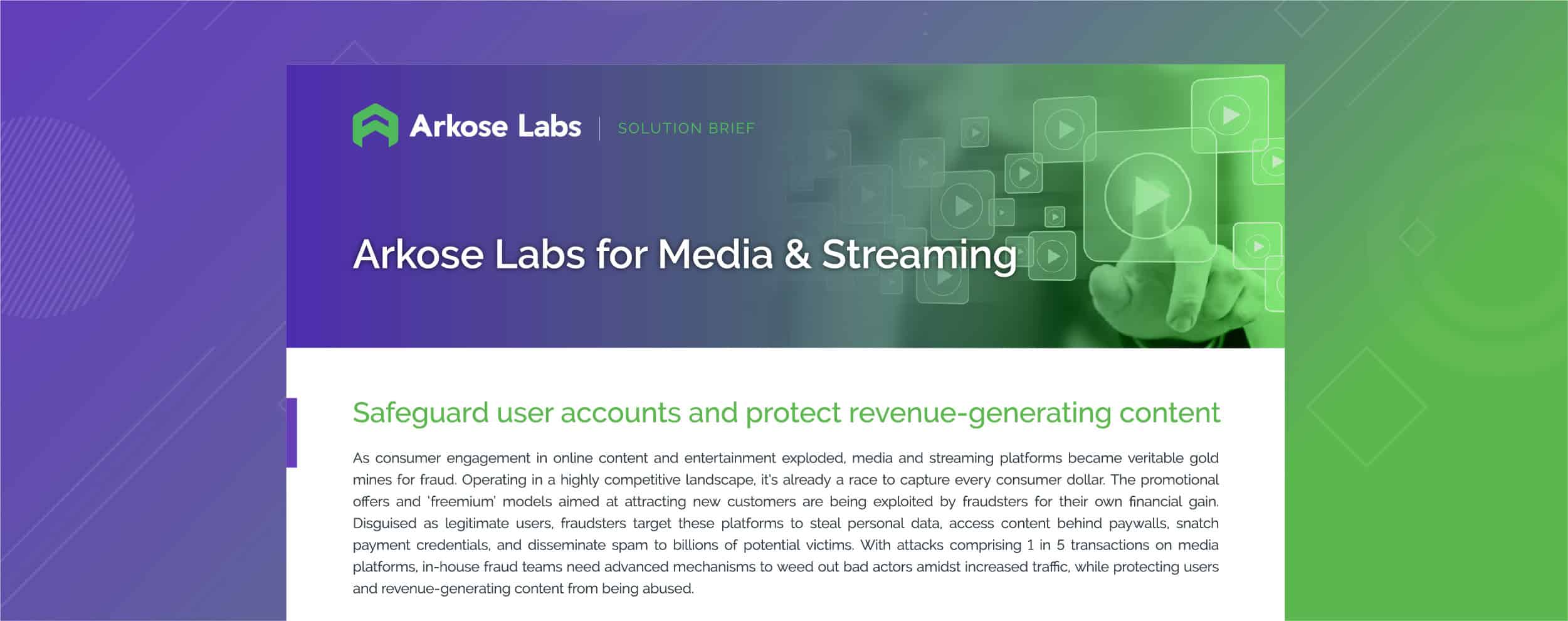As the world gravitates towards remote working and more homes come equipped with high-speed internet connections tied to their TV, the video streaming industry has become more relevant than ever before. In fact, according to Nielsen, streaming video platforms have already begun outpacing cable when it comes to percentage of audiences and shows a changing of the guard with viewing habits.
As streaming services and their on-demand content continue to grow with popularity, so does the threat posed by cybercriminals. Attackers know the value each individual streaming account can have. For instance, cybercriminals can sell stolen login credentials on the dark web, or use a hijacked account as a means to pirate premium video content or steal sensitive data and payment information for monetization purposes.
It Is imperative that enterprises look to secure video streaming from cybercriminals. This will not only protect against the multitude of threats facing each streaming service, but secure customer accounts from unauthorized access.
To learn more about safeguarding digital media from fraud, Read our solution brief on Media & Streaming

RECOMMENDED RESOURCE
Media and Streaming: Secure Access to Your Content from Malicious Attacks and Protect Revenue
Video streaming platforms are under threat from cybercriminals
Video streaming has become an increasingly popular way to consume content, with millions of viewers logging on to platforms every day. But, this popularity has not gone unnoticed by cybercriminals who want to make a quick buck. Attackers use phishing attacks to steal login credentials and create lookalike websites to obtain personal and financial information. Other cyber threats faced by video and music streaming apps include stolen credentials and account takeovers, and even credential stuffing, among other tactics including spoofing an IP address, to bypass a paywall or access servers, including those found as part of a CDN, for video content. Here are some of the most popular attack methods:
Account takeovers and credential stuffing
Video streaming platforms such as Netflix, Disney+, and Hulu are under threat from cybercriminals who exploit users' accounts through credential stuffing and account takeovers (ATOs), ATOs occur when attackers use stolen credentials to take control of genuine user accounts and use them as a launchpad for a variety of downstream cyber crimes. The use of stolen or fake credentials can also enable cybercriminals to conduct new account fraud in which they use these credentials to set up fake accounts on subscription-based streaming platforms.
Credential stuffing, on the other hand, is a subset of ATOs in which cybercriminals use different username and password combinations at scale until a match is found and they can log into an account. Cybercriminals will often use stolen credentials, or credentials purchased on the dark web, to conduct credential stuffing attacks. Like ATOs, this type of attack is common amongst video streaming services as many users have the same password for multiple accounts. This can lead to ATO fraud, data breaches, and other security issues.
These attacks are a serious threat to the security of video streaming platforms, and they can result in the theft of sensitive user data, such as credit card information and personal data that can lead to identity theft. In order to ensure the security of your video streaming service, it's important to remind customers of security features, to use strong passwords, enable multi-factor authentication, and monitor their account for any unauthorized activity. By taking these steps, you can help protect your enterprise and its customers against the growing threat of cybercrime in the world of video streaming.
Phishing
As video streaming platforms become more popular, they are also becoming more vulnerable to cybercriminals. Each video streaming user account is a potential money-making opportunity for attacks. This is especially true with phishing and other social-engineering attacks that mirror popular streaming services like Netflix and Disney+ signup pages. These fraudulent sites are aimed at enticing users with free subscriptions in order to steal their personal and financial information. Once cybercriminals have access to user accounts, they can then steal personal information and engage in further downstream cyberattacks and fraud.
Malicious bots enable attacks against video streaming platforms
Video streaming platforms are increasingly under threat from cybercriminals who use bots to launch a variety of attacks. For instance, bots are commonly used by cybercriminals to create fake websites resembling streaming platforms, in order to trick users into giving up their login credentials in phishing attempts. Credential stuffing and brute force attacks are two of the most common forms of bot-based attacks on streaming platforms. In credential stuffing, a bot is used to guess passwords in order to gain access to user accounts. A brute force attack uses bots to systematically try every possible password combination until the correct one is found.
In addition to stealing user data, bots can also be used to stream media. This can happen without the user's knowledge or consent, and can result in data leakage and performance issues, like poor audio and slow live streaming or playback speeds. As such, it's important for video streaming platforms to take proactive measures to protect themselves from automated bot-based attacks, including botnets, by using advanced bot detection and mitigation technologies, like the one provided by Arkose Labs.
How video streaming platforms can protect themselves and their customers
While pricing typically gets the headlines, a secure video platform can be a key differentiator amongst consumers that fear getting targeted by hackers. Video streaming platforms need to take measures to protect themselves and their customers from cyber threats like the ones posed by automated bots. Encryption is a key factor in protecting video files from hackers. Two-factor authentication, and single sign-on (SSO) can be a reliable method of securing live videos. By using digital rights management (DRM) protection, providers can control which devices content can be accessed and provide access to approved devices.
While platforms can take steps to protect themselves, it is vital to also raise customer awareness to help prevent account credential hacks. By providing guidance on email address and password protection, like creating complex passwords and using steps to avoid phishing messages from unknown senders, the likelihood of a successful hack can be minimized. Encryption serves as an effective security measure to prevent unwanted interception and download of media, and it is crucial that video streaming platforms remain vigilant to stay ahead of potential threats.
Secure streaming with Arkose Labs
Video streaming companies need to ensure the security of their platform to avoid cybersecurity incidents. Arkose Labs provides advanced security solutions to safeguard streaming data from hacker’s bot attacks and fraudulent activities and piracy. Securing online video platforms often start at the front door, for instance a secure paywall or the user login or account creation stage on both an internet browser and apps.
Arkose Labs’ bot management solution empowers security teams to effectively mitigate the threat posed by bots without harming the experience for legitimate users.
Arkose Labs helps streaming platforms tackle cybercriminals by using targeted friction combined with risk-based assessments and an array of security features that are backed by analytics. Suspicious traffic is presented with real-time, Arkose MatchKey challenges that can’t be solved by bots, and that dramatically slow down human-driven attacks.
With security from Arkose Labs, streaming platforms can provide a secure and seamless experience to their users while stopping attackers in their tracks. After all, video streaming platforms should provide on-demand video via app, not on-demand access to hackers.
If you would like to learn more, be sure to book a demo today.

